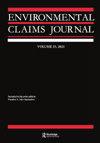Renewal Acute Toxicity of Broad-Spectrum Herbicide, Paraquat Dichloride in Channa punctatus (Bloch)
Q3 Environmental Science
引用次数: 4
Abstract
Abstract Paraquat dichloride (PD) is a major contaminant in aquatic environment and is a cause of concern to different organisms, especially to fishes, as it causes different changes in behavioral and morphological to aquatic creatures. Hence, the objectives of the study are to examine the acute toxicity, behavioral and morphological alterations in air-breathing teleost fish, Channa punctatus (CP) (Bloch). Renewal acute toxicity was performed to calculate the lethal concentration (LC50) by Finney’s probit analysis to CP by exposure to wide range of PD concentrations (30, 60, 90, 120, 150 mg/L) for 24, 48, 72 and 96 h. The LC50 values determined are 93.36, 82.22, 67.93 and 65.87 mg/L for 24, 48, 72 and 96 h, respectively. Maximum allowable toxicant concentrations (MATC) defined by LC50 value is found to be 0.6587 mg/L. The upper and lower 95 percent confidence limit (Fiducial limit) are in narrow range for 24, 48, 72 and 96 h, respectively, and thus results of the experiments are considered good. Fiducial limit calculated helps us to state that the LC50 falls within the specified limit and helps in constructing of toxicity curve. LC50 value gradually decreases with increase in time. Mortality rate was dose-time dependent and increased with increase in concentration. The behavioral changes provide biologically relevant endpoints in evaluating toxicity testing. Deviation from baseline behavior was noticed. Morphological deformities were also seen. The present study provides a clear indication of the toxicity of PD, and is highly toxic even at low level. Hence, it is recommended that appropriate eco-toxicological risk assessment should be made and indiscriminate use of PD by farmers should be discouraged particularly in areas close to aquatic environment.广谱除草剂二氯百草枯对斑沟的急性毒性更新
摘要二氯百草枯(PD)是水生环境中的一种主要污染物,它会导致水生生物在行为和形态上发生不同的变化,引起不同生物特别是鱼类的关注。因此,本研究的目的是检测呼吸空气的硬骨鱼斑钱鱼(CP)(Bloch)的急性毒性、行为和形态变化。通过Finney的probit分析,通过暴露于各种PD浓度(30、60、90、120、150 mg/L)用于24、48、72和96 h.测定的LC50值分别为93.36、82.22、67.93和65.87 24、48、72和96的mg/L h、 分别。由LC50值定义的最大允许毒物浓度(MATC)为0.6587 mg/L。95%置信度上限和下限(基准限)在24、48、72和96的窄范围内 h、 因此实验结果被认为是良好的。计算出的基准限值有助于说明LC50在规定的限值范围内,并有助于构建毒性曲线。LC50值随着时间的增加而逐渐降低。死亡率是剂量-时间依赖性的,并且随着浓度的增加而增加。行为变化提供了评估毒性测试的生物学相关终点。注意到偏离基线行为。还发现了形态畸形。本研究提供了PD毒性的明确指示,即使在低水平下也具有高毒性。因此,建议进行适当的生态毒理学风险评估,并劝阻农民滥用PD,特别是在靠近水生环境的地区。
本文章由计算机程序翻译,如有差异,请以英文原文为准。
求助全文
约1分钟内获得全文
求助全文
来源期刊

Environmental Claims Journal
Environmental Science-Management, Monitoring, Policy and Law
CiteScore
2.20
自引率
0.00%
发文量
10
期刊介绍:
The Environmental Claims Journal is a quarterly journal that focuses on the many types of claims and liabilities that result from environmental exposures. The ECJ considers environmental claims under older business insurance policies, coverage and claims under more recent environmental insurance policies, as well as toxic tort claims. Exposures and claims from all environmental media are considered: air, drinking water, groundwater, soil, chemicals in commerce and naturally occurring chemicals. The journal also considers the laws, regulations, and case law that form the basis for claims. The journal would be of interest to environmental and insurance attorneys, insurance professionals, claims professionals, and environmental consultants.
 求助内容:
求助内容: 应助结果提醒方式:
应助结果提醒方式:


